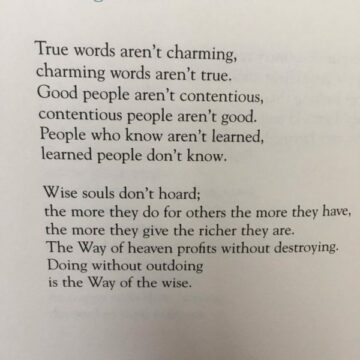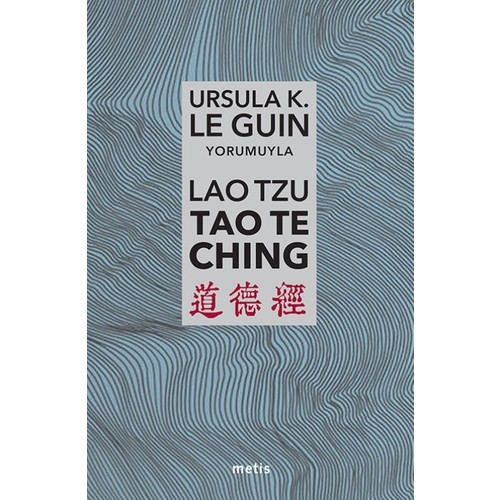


By the time she was in her twenties, having lived with the book and having seen the book live through her, she set out to give voice to that silent mutuality. “I was lucky to discover him so young, so that I could live with his book my whole life long,”Le Guin recalls. Le Guin soon came to discover that this “venerable object of mystery” held enchantments deeper than the beguiling blue-and-red Chinese designs gracing its cover - upon asking her father why he was taking notes, she was told that he was marking the chapters he wanted read at his funeral. October 21, 1929), who first became besotted with it as a little girl, watching her father leaf through and lovingly annotate a scrumptious cloth-bound copy of Paul Carus’s 1898 translation. One changeless constant has endured across the millennia: Every generation of admirers has felt, and continues to feel, a prescience in these ancient teachings so astonishing that they appear to have been written for their own time.Īmong the timeless text’s most ardent admirers is Ursula K. As its wisdom radiated West over the centuries, it went on to influence minds as varied as John Cage (who wove it into his pioneering musical aesthetic), Franz Kafka (who considered it the clearest view of reality), Bruce Lee (who anchored his famous metaphor for resilience in it), Alan Watts (who placed it at the center of his philosophy), and Leo Tolstoy (who leaned on it in his proto-blog about the meaning of life).

With uncommon elegance, it crystallized the teachings of Taoist philosophy on such perennial matters as power, happiness, and the source of meaning in human life. Two and a half millennia ago, the Chinese sage Lao Tzu wrote a poetic and profound short text known as the Tao Te Ching.


 0 kommentar(er)
0 kommentar(er)
